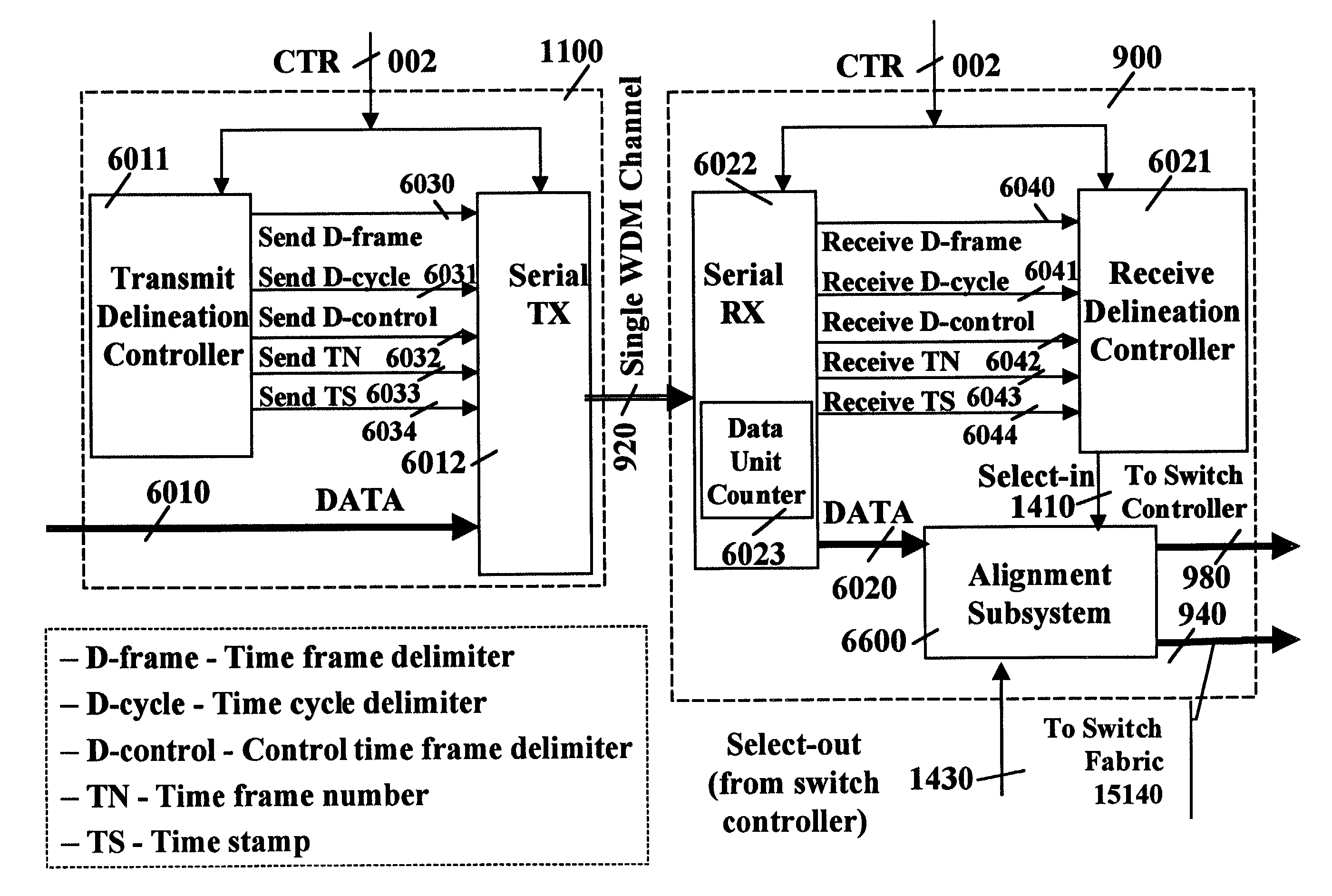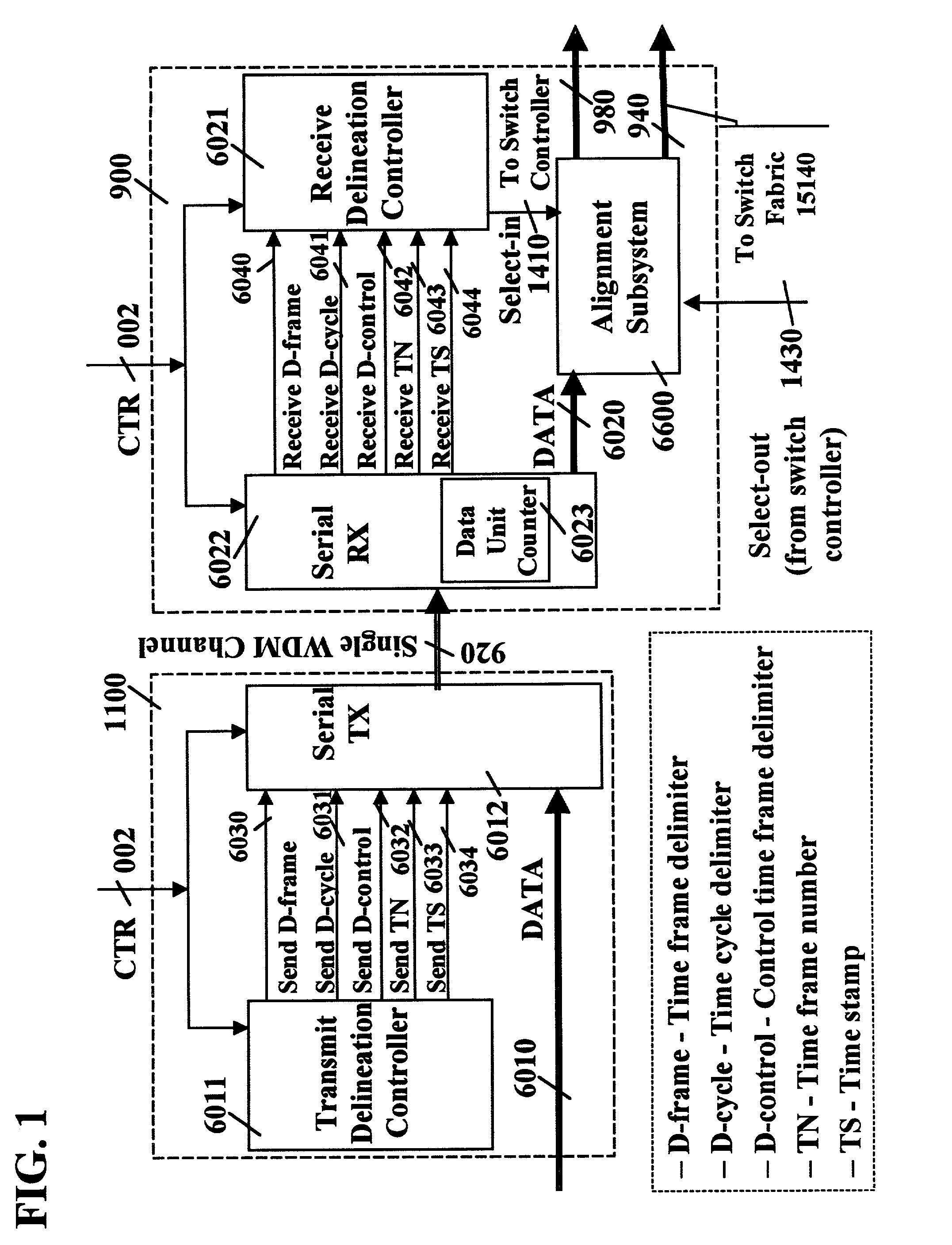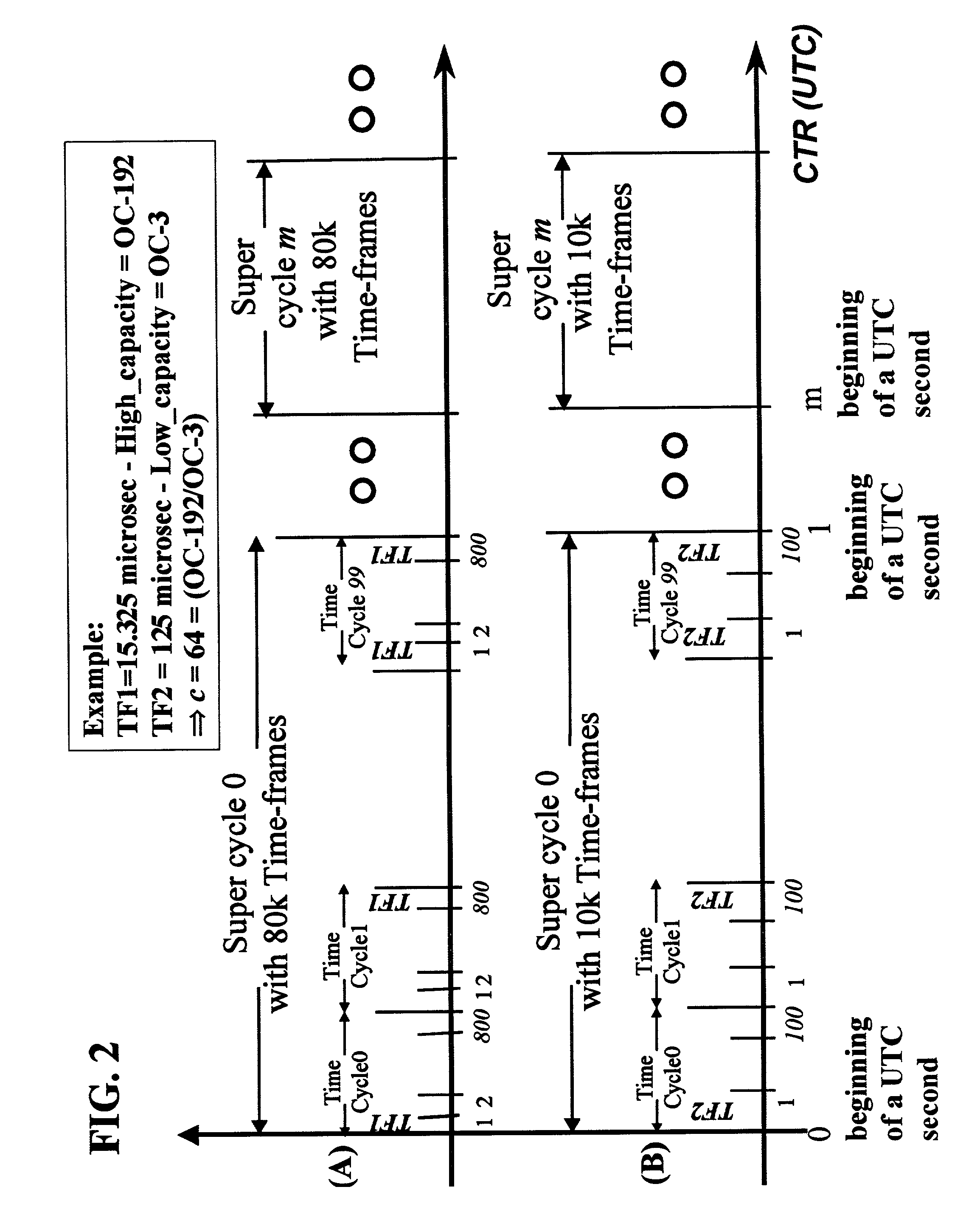Link transmission control with common time reference
a transmission control and time reference technology, applied in the field of link transmission control with common time reference, can solve the problems of not being able to guarantee or limit the end-to-end delay and jitter, and the fidelity of real-time streams at the points of reception is significantly reduced, so as to achieve the effect of increasing robustness and independen
- Summary
- Abstract
- Description
- Claims
- Application Information
AI Technical Summary
Benefits of technology
Problems solved by technology
Method used
Image
Examples
first embodiment
[0480]The objective of the clocking subsystem 16900 is to produce an LTR signal 310 synchronized with the CTR signal 002, whenever present. When the CTR signal 002 is not available, if at least two of the UTR signals 16320a, 16320b, and 1632c from their respective mapping controllers 16440 have the same frequency, the LTR signal 310 generated by the clocking system 16900 is synchronized with the isochronous UTR signals among 16320a, 16320b, and 1632c.
[0481]The clock controller 16910 receives as input the CTR signal 002 and the UTR signals 16320a, 16320b, and 1632c of the various input links from their respective mapping controllers 16440. If the CTR signal 002 is available, the clock controller 16910 uses it as the target signal 16915, i.e., connects its CTR input 002 with its target signal output 16915.
[0482]If the CTR signal 002 is not available, the clocking subsystem 16900 tries to devise the CTR from one of its neighboring nodes. The first step is for the clock controller 169...
second embodiment
[0484] if an external CTR signal 002 is not available, the clock controller 16910 of the clocking system 16900 in FIG. 35 executes the reference node election algorithm presented in FIG. 32, and described above, to identify a node in the network whose LTR should be used as a CTR and to select one of the neighboring switching systems from whose UTR the LTR is to be derived.
[0485]The input counter 16930 and the output counter 16935 are incremented with a frequency generated by a clock 16920 on the increment control signal 16925. The input counter 16930 is reset with the frequency of the target signal 16915. Thus, before each reset, the input counter 16930 contains the duration, according to the clock 16920, of the last time frame as defined by the target signal 16915.
[0486]The purpose of the FIR filter 16950 is to smooth the fluctuations of the measurement 16933 of the duration of each time frame by providing as output 16955 a time frame duration obtained by averaging the measured dur...
PUM
 Login to View More
Login to View More Abstract
Description
Claims
Application Information
 Login to View More
Login to View More - R&D
- Intellectual Property
- Life Sciences
- Materials
- Tech Scout
- Unparalleled Data Quality
- Higher Quality Content
- 60% Fewer Hallucinations
Browse by: Latest US Patents, China's latest patents, Technical Efficacy Thesaurus, Application Domain, Technology Topic, Popular Technical Reports.
© 2025 PatSnap. All rights reserved.Legal|Privacy policy|Modern Slavery Act Transparency Statement|Sitemap|About US| Contact US: help@patsnap.com



